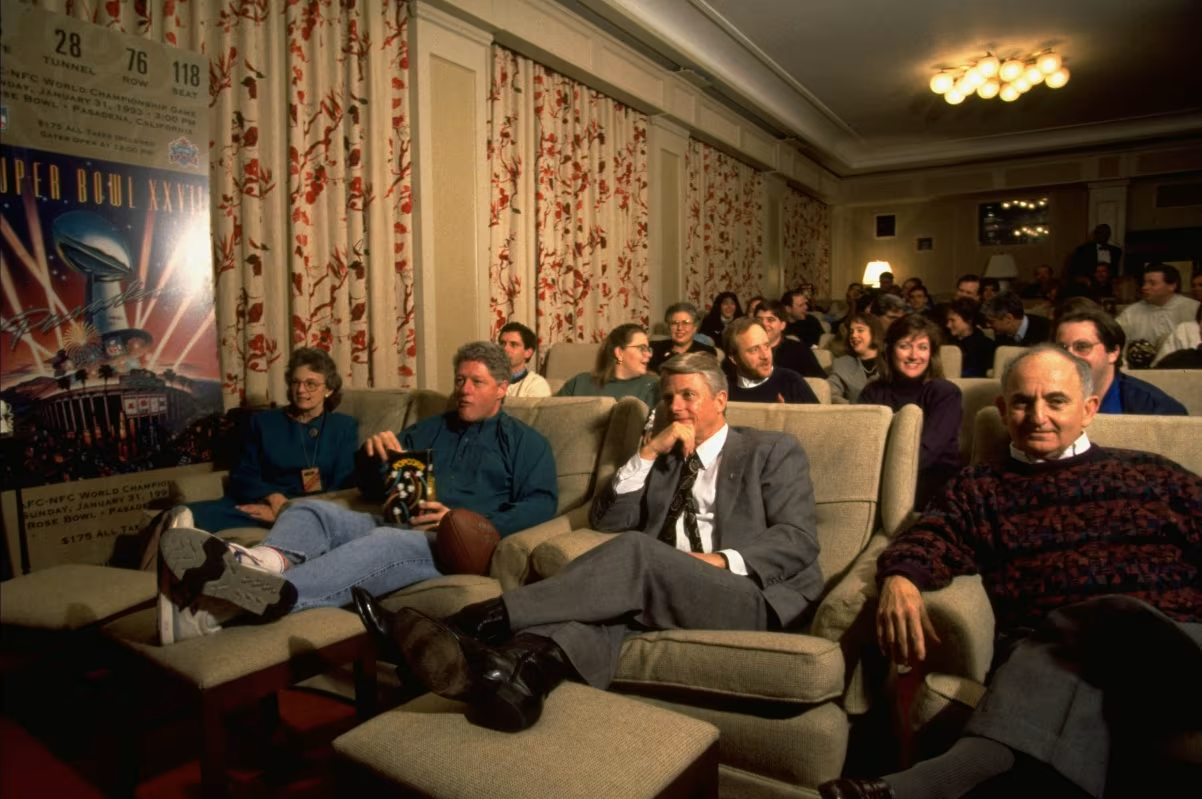A quiet but historic corner of the White House has fallen silent. This week, the White House Family Theater, a small but beloved 42-seat screening room that had entertained presidents and their families for over eight decades, was demolished. The decision comes as part of the East Wing’s destruction to make space for President Donald Trump’s planned $300 million ballroom project.
For generations, the Family Theater was more than a room with a projector. It was a place where presidents laughed, cried, and found brief moments of escape from the pressures of leading the free world. From Franklin D. Roosevelt’s wartime newsreels to Ronald Reagan’s Hollywood nostalgia, the theater was a symbol of America’s enduring relationship with cinema and culture.
From Cloakroom to Cultural Landmark
The White House Family Theater began humbly in 1942, when a cloakroom in the East Terrace was converted into a screening room under President Franklin D. Roosevelt. At the time, the nation was in the midst of World War II, and Roosevelt—ever aware of the power of media—used the space to watch newsreels and updates from the front lines.
According to the White House Historical Association, Roosevelt would often screen World War II-era footage showing battles across Europe and Asia. He believed in the value of entertainment as both inspiration and morale booster. “Entertainment is always a national asset,” Roosevelt declared in 1943. “Invaluable in time of peace, it is indispensable in wartime.”
A Tradition of Presidential Screenings
While Roosevelt was the first to have an official theater inside the White House, his predecessors had already flirted with cinema. In 1915, President Woodrow Wilson hosted a private screening of The Birth of a Nation in the East Room—making it the first film ever shown at 1600 Pennsylvania Avenue.
But it was the Family Theater that turned movie nights into a White House tradition. Over the decades, it became an intimate space for both official and private gatherings. Presidents hosted diplomats, celebrities, and personal friends there, sharing not only movies but moments of reflection, laughter, and even controversy.
Former President Bill Clinton, a known movie lover, once joked, “The best perk in the White House isn’t Air Force One or Camp David. It’s the wonderful movie theater I get here, because people send me these movies all the time.”
Changing Looks, Timeless Memories
The theater evolved over the years, both in design and technology. Reports from Business Insider describe its decor journey—starting with green chairs and mustard curtains, then shifting to white seats and floral drapes, and finally settling into its most recent all-red design, reminiscent of old Hollywood glamour.
Despite its modest size, the 42-seat room became the setting for some unforgettable moments. In January 1977, President Jimmy Carter instructed staff to show only “family-friendly” films. That policy, however, didn’t last long—by Christmas, Carter found himself watching Midnight Cowboy, the Oscar-winning X-rated drama about a male hustler in 1960s New York, reportedly unaware of its explicit content.
Reagan’s E.T. Moment
One of the most famous screenings took place in the early 1980s, when President Ronald Reagan hosted filmmaker Steven Spielberg for a showing of E.T. the Extra-Terrestrial. Spielberg later recalled the surreal experience of presenting his sci-fi hit to a room that included the President, First Lady Nancy Reagan, Supreme Court Justice Sandra Day O’Connor, and even astronauts—possibly Neil Armstrong among them.
When the film ended, Reagan stood up, thanked Spielberg, and added a line that left everyone stunned: “There are a number of people in this room who know that everything on that screen is absolutely true.” According to Spielberg, Reagan didn’t smile as he said it—but everyone laughed anyway.
Reagan’s only complaint? The credits were too long.
A Space of Stories and Sentiment
For decades, the Family Theater wasn’t just for Hollywood premieres. It hosted sporting events, documentaries, and cultural showcases. Presidents used it to screen films tied to history or national themes, and First Ladies often organized viewings for guests and staff.
The George W. Bush Library once noted that screenings ranged “from official events with members of the public to private evenings for the President, his family, and close staff.” It was a blend of politics and pop culture—a symbol of how even the world’s most powerful leaders sought moments of ordinary joy.
Trump’s Ballroom and the Loss of Legacy
Now, the Family Theater joins other East Wing landmarks lost to President Trump’s ambitious redesign. The project, estimated at $300 million, aims to build a lavish ballroom capable of hosting large-scale state dinners, charity galas, and political events.
The East Wing, historically home to the First Lady’s office, also featured a portico and a colonnade that connected to the Executive Residence. Preservation advocates have criticized the demolition, calling it a blow to the White House’s cultural heritage. However, supporters argue the new ballroom will modernize the complex and create a more versatile venue for global diplomacy.
The Curtain Falls
With its demolition, the White House Family Theater becomes another chapter in the long story of a home that reflects both the nation’s power and its personality. From Roosevelt’s wartime reels to Reagan’s alien visitors, from Clinton’s weekend screenings to Carter’s cinematic misstep, the theater chronicled not just films—but the evolving spirit of American leadership.
Its red chairs may be gone, but the echoes of laughter, applause, and presidential reflection will linger long after the dust settles. The Family Theater may no longer exist within the walls of the White House, but in history—and in Hollywood—it will forever remain the “first movie theater” of the United States.

